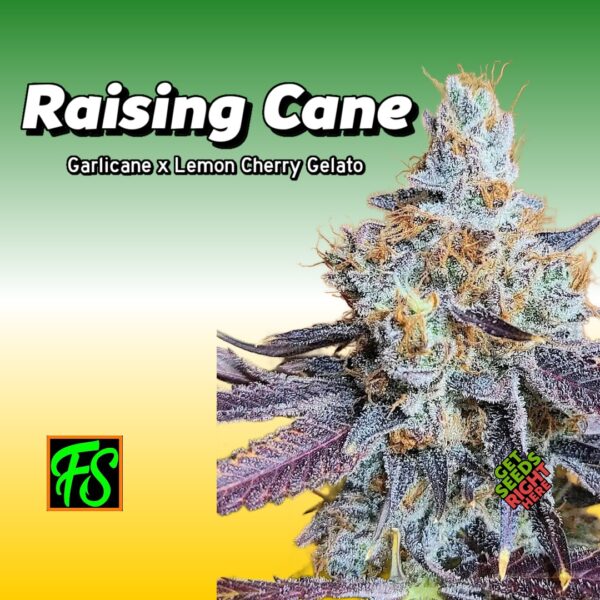
Premium Cannabis Seeds & Clones Ready to Ship
& Rare Clone-Only Strains
Discover elite cannabis seeds and clones from Get Seeds Right Here — your trusted source for authentic genetics that are impossible to find elsewhere. Every strain is Verified, HLVD tested and backed by our decade of cultivation expertise.
Ready to elevate your grow?
Browse our collection of clean, healthy & fully rooted clones.
Shop Get Seeds Right Here now and grow like the pros.
🔥 500+ Cannabis Strains Available – Fully Rooted & Ready to Rock!Cap Junky • Chem Dog • Wedding Cake • Lemon Cherry Gelato • Blue Dream • Apple Fritter • Ice Cream Cake • Cereal Milk • Super Boof • GMO • Runtz • Gorilla Glue • Glitter Bomb • Grape Ape • White Truffle • Purple Punch • Oreoz • Zoap • Jealousy • Sour Diesel • White Widow • Strawberry Cough • Green Crack • Cherry Pie • Cookies • OG Kush • Galactic Warheads • Headband and 100’s more!
The Biggest Selection of Cannabis Clones on the Internet!
Latest Clones
Check out our most recent clone drops — carefully selected for yield, bag-appeal, unique terpene profiles, and potent THC that delivers top-shelf results.
Every strain is verified, HLVD-tested clean and taken from strong Generation 0 mother plants to ensure a clean and healthy start. From rare drops to breeder cut exclusives, these genetics are trusted by growers and smokers nationwide.
-
Weed Blog
Latest Cannabis Strain & Grow Articles
Explore our marijuana blog for expert guides, strain spotlights, and cultivation tips.
From legendary strains like Sour Diesel to the truth about Indica vs Sativa,
we cover everything growers need to know.Galactic Warheads strain guide
Dive into the history, effects, and grow tips for Galactic Warheads clones — Frosty Funk and Unique terps.
Sour Diesel — The Real Ultimate Guide
Dive into the history, effects, and grow tips for Sour Diesel clones — one of the most iconic strains in cannabis culture.
Indica vs Sativa — Is It a Lie?
We break down the myths and truths about Indica and Sativa strains, helping you choose based on effects, not just labels.
🌱 Cannabis Overview
Cannabis, also called marijuana, weed, pot, kush, kind bud, skunk, crippie, ganja, or hooch, is a flowering plant in the Cannabaceae family. Native to Asia, it includes Cannabis sativa, C. indica, and C. ruderalis. Its main psychoactive compound is THC, one of over 483 compounds and at least 65 cannabinoids.
🔥Methods of Use
Enjoyed by smoking, vaporizing, eating, or extracts. Effects include euphoria, altered perception, munchies, and relaxation. Risks may include paranoia, memory issues, and long-term concerns when starting young.
🌿Strains & Cultivation
Cannabis strains may be pure or hybrid. Growers rely on clones for genetic consistency, while autoflowering seeds offer convenience. Sinsemilla (unpollinated female plants) are prized for potency.
🌍Global Usage
Between 128–232 million people worldwide (2.7–4.9% of adults) used cannabis in 2013. It remains the most popular illicit substance globally.
🇺🇸U.S. Usage
In the U.S., adult usage rose from 43% in 2020 to 51% in 2021. 22% of adults report annual use and 15.3% monthly.
⚕️Medical Access
Medical cannabis is legally available in Canada, Belgium, Australia, the Netherlands, Spain, and in 40 U.S. states.
📜Ancient History
Cannabis has been used for medicine, fiber, and ritual for thousands of years in regions like China, India, and the Middle East.
⚖️Evolving Laws
Legal status varies widely — from full legalization in some countries to strict prohibition in others.
🎶Cultural Impact
Cannabis has influenced music, art, and counterculture, shaping global conversations around freedom, creativity, and wellness.
Why Choose Get Seeds Right Here?
We supply high-quality cannabis clones for sale and premium cannabis seeds that are laboratory-tested, authentic, and cultivation-ready. Our healthy marijuana clones feature verified genetics, pest-free cultivation, and established root systems. Here's what sets our fresh & healthy clones apart from other cannabis nurseries.
🛒Convenient Online Ordering
Secure checkout process with fast, reliable delivery straight to your door. Perfect for growers seeking quality cannabis clones with no hassle.
🌿Compliant THCA Plants
Our Farm Bill compliant THCA plants maintain compliant delta-9 levels, making them legal to ship nationwide while providing clean, vigorous genetics for your grow.
📦Secure Shipping & Live Arrival
Every order includes discreet shipping with proper insulation and our live-arrival guarantee for maximum peace of mind.
🤝Commercial & Bulk Orders
Volume pricing available for licensed cultivators, with consistent supply of healthy, rooted clones to scale your operation.
🧪Lab-Tested & Pathogen-Free
All mother plants undergo regular screening for Hop Latent Viroid (HLVD) and other pathogens, with lab verification ensuring clean genetics.
🧬Authentic Genetics
Genuine breeder cuts and clone-only strains sourced from trusted connections — authentic genetics with verified lineage, never substituted.
🛡️Replacement Guarantee
If any clone arrives damaged or unhealthy, we provide fast replacements with no questions asked — ensuring healthy plants from day one.
🚚Free Shipping
Every order ships free with discreet packaging, featuring rooted and hardened clones that are ready to thrive in your growing environment.
Frequently Asked QuestionsIs it legal to ship marijuana clones in the U.S.?
Yes. Under current federal guidelines, cannabis clones are treated the same as seeds. The DEA confirms that seeds, tissue culture, and other genetic material are not controlled under the CSA if they contain less than 0.3% delta-9-THC.
Can you ship cannabis clones to all 50 states?
Yes. Since the 2018 Farm Bill, shipping cannabis clones for sale and seeds with compliant THC levels is federally legal in all 50 states. We provide fast, discreet delivery nationwide.
Do you test mother plants for Hop Latent Viroid (HLVD)?
Yes. All mother plants are tested bi-weekly for HLVD. Our sterile protocols and integrated pest management keep genetics clean and healthy, ensuring weed clones ship in top condition.
How do you verify that your cannabis strains are authentic?
We source from trusted breeders and collectors with decades of experience. Every clone in our library is a verified cut, backed by long-term relationships in the cannabis industry.
Are your clones rooted when shipped?
Yes. All marijuana clones are fully rooted in peat or rockwool cubes, ready for transplant into soil or hydroponic systems.
Do you offer a guarantee on cannabis clones?
Yes. If your cannabis clones arrive in poor condition, contact us within 3 days with photos. We’ll either reship immediately or arrange a free replacement after review.
Can I get bulk pricing on seeds and clones?
Yes. We supply bulk orders of regular, feminized, and auto-flower seeds, as well as large-scale weed clone orders for commercial growers.
Are you affiliated with Seeds Here Now?
No. We are an independent company. While our name was inspired by them early on, we have grown into our own brand with a unique selection of elite cannabis genetics.
How long does it take for cannabis clone orders to ship?
Most orders ship within 1–10 days. We prioritize clone health over speed, so we may wait for fresh cuts to ensure plants arrive strong.
Can you recommend the best strains for my grow?
Yes. Email info@getseedsrighthere.com with your grow style, space, and goals. We’ll suggest cannabis clones or seeds that fit your needs.
Do you offer free shipping on marijuana clones?
Yes. All marijuana clone orders include free, discreet shipping to all 50 states.
You’ve got the answers—now let’s get you growing.
Join Get Seeds Right Here for exclusive drops, grow tips,
5% off every order AND a monthly 15% off coupon code.No spam. Just the best genetics, delivered to your inbox.
Shopping CartScroll to TopAll Washer Strains ON SALE Buy 3 Get 2 Free No Coupon NeededAll Washer Strains ON SALE Buy 3 Get 2 Free No Coupon Needed




















